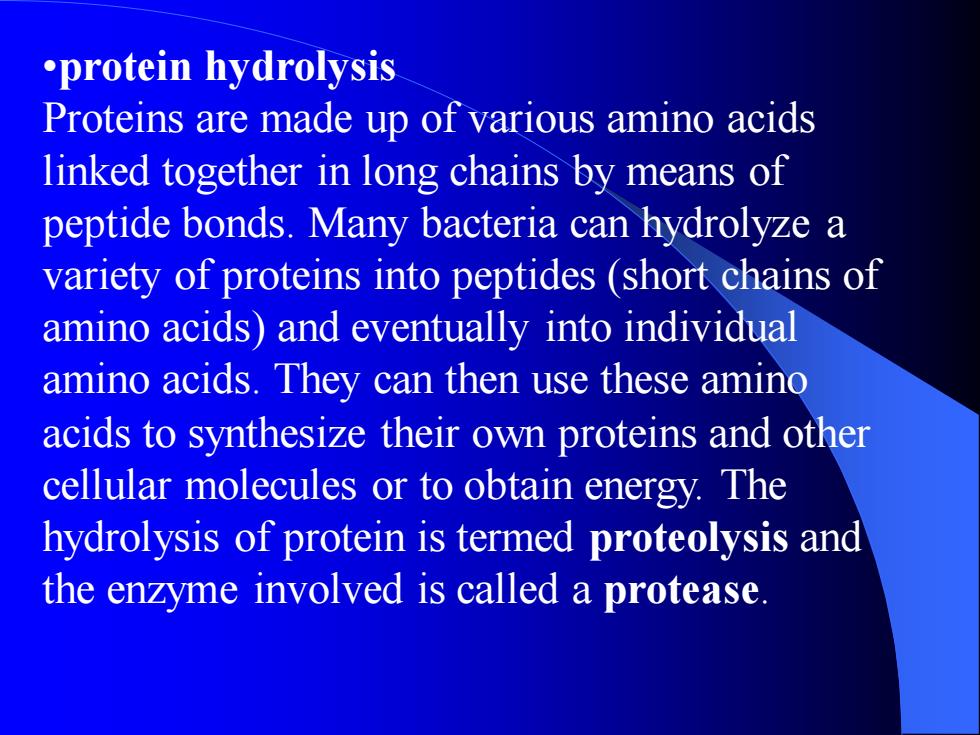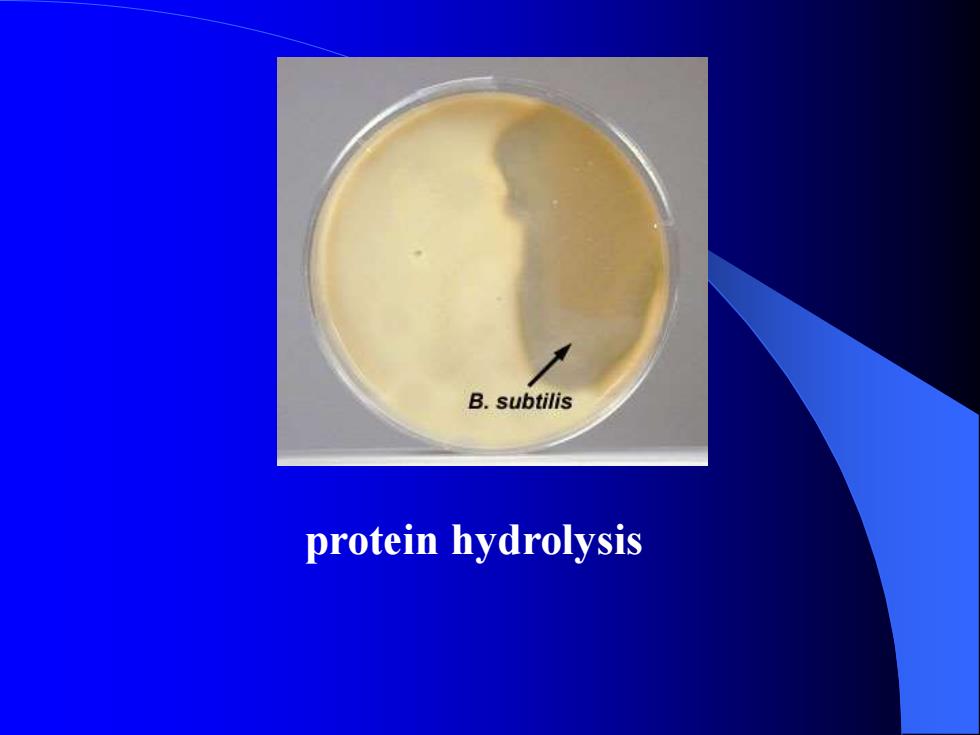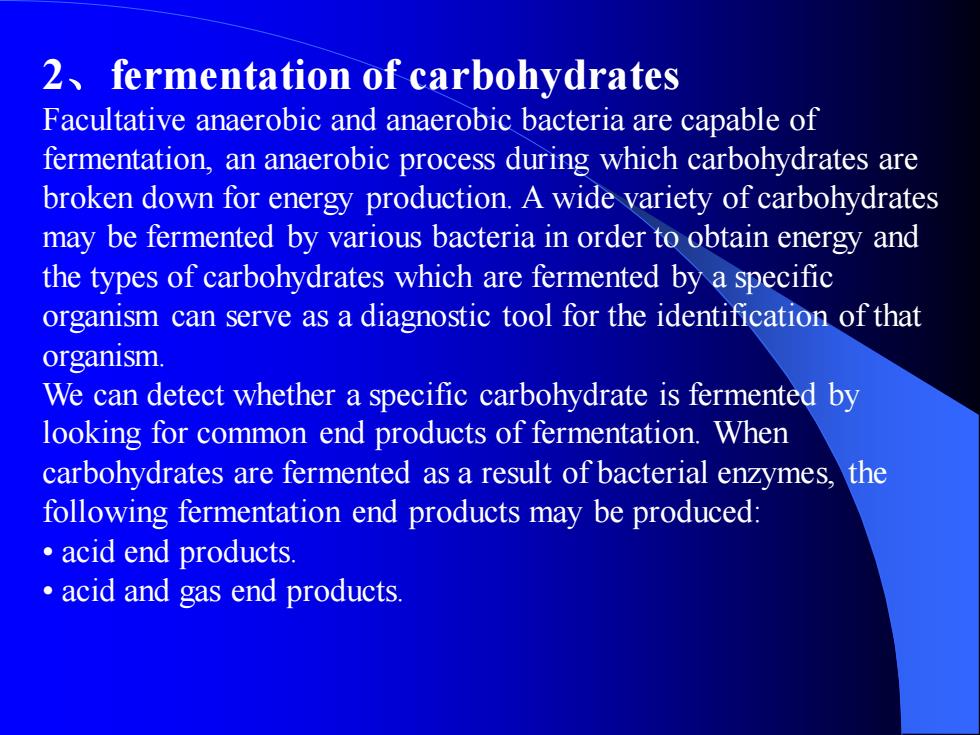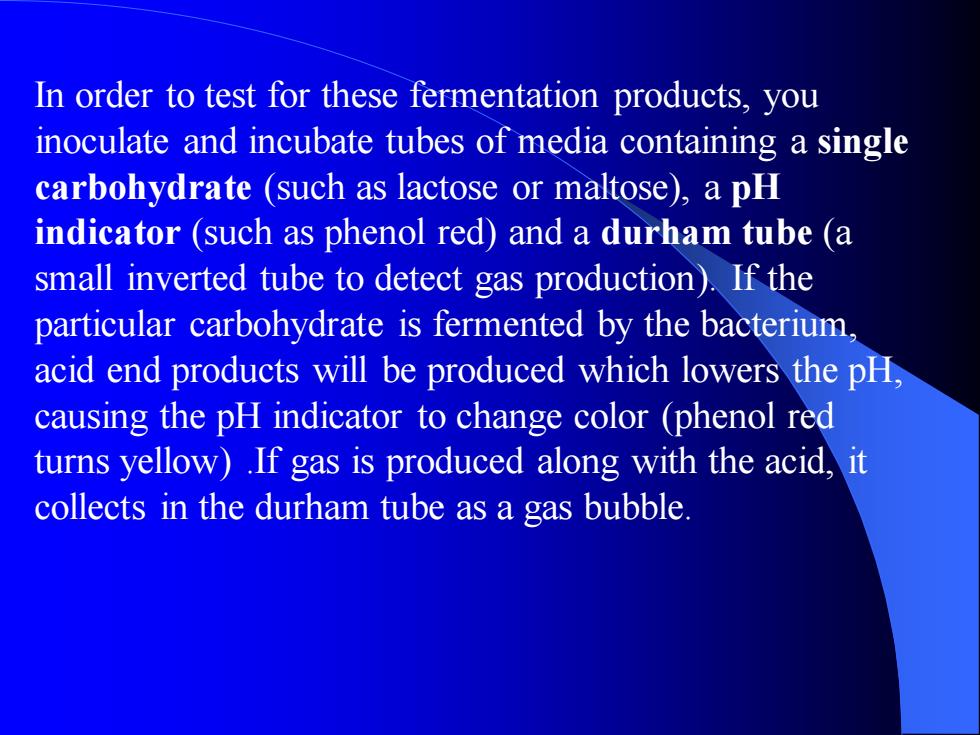
•protein hydrolysis Proteins are made up of various amino acids linked together in long chains by means of peptide bonds. Many bacteria can hydrolyze a variety of proteins into peptides (short chains of amino acids) and eventually into individual amino acids. They can then use these amino acids to synthesize their own proteins and other cellular molecules or to obtain energy. The hydrolysis of protein is termed proteolysis and the enzyme involved is called a protease
•protein hydrolysis Proteins are made up of various amino acids linked together in long chains by means of peptide bonds. Many bacteria can hydrolyze a variety of proteins into peptides (short chains of amino acids) and eventually into individual amino acids. They can then use these amino acids to synthesize their own proteins and other cellular molecules or to obtain energy. The hydrolysis of protein is termed proteolysis and the enzyme involved is called a protease

protein hydrolysis
protein hydrolysis

2、fermentation of carbohydrates Facultative anaerobic and anaerobic bacteria are capable of fermentation, an anaerobic process during which carbohydrates are broken down for energy production. A wide variety of carbohydrates may be fermented by various bacteria in order to obtain energy and the types of carbohydrates which are fermented by a specific organism can serve as a diagnostic tool for the identification of that organism. We can detect whether a specific carbohydrate is fermented by looking for common end products of fermentation. When carbohydrates are fermented as a result of bacterial enzymes, the following fermentation end products may be produced: • acid end products. • acid and gas end products
2、fermentation of carbohydrates Facultative anaerobic and anaerobic bacteria are capable of fermentation, an anaerobic process during which carbohydrates are broken down for energy production. A wide variety of carbohydrates may be fermented by various bacteria in order to obtain energy and the types of carbohydrates which are fermented by a specific organism can serve as a diagnostic tool for the identification of that organism. We can detect whether a specific carbohydrate is fermented by looking for common end products of fermentation. When carbohydrates are fermented as a result of bacterial enzymes, the following fermentation end products may be produced: • acid end products. • acid and gas end products

In order to test for these fermentation products, you inoculate and incubate tubes of media containing a single carbohydrate (such as lactose or maltose), a pH indicator (such as phenol red) and a durham tube (a small inverted tube to detect gas production). If the particular carbohydrate is fermented by the bacterium, acid end products will be produced which lowers the pH, causing the pH indicator to change color (phenol red turns yellow) .If gas is produced along with the acid, it collects in the durham tube as a gas bubble
In order to test for these fermentation products, you inoculate and incubate tubes of media containing a single carbohydrate (such as lactose or maltose), a pH indicator (such as phenol red) and a durham tube (a small inverted tube to detect gas production). If the particular carbohydrate is fermented by the bacterium, acid end products will be produced which lowers the pH, causing the pH indicator to change color (phenol red turns yellow) .If gas is produced along with the acid, it collects in the durham tube as a gas bubble